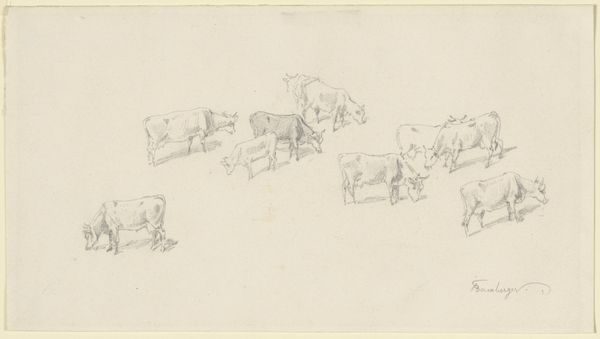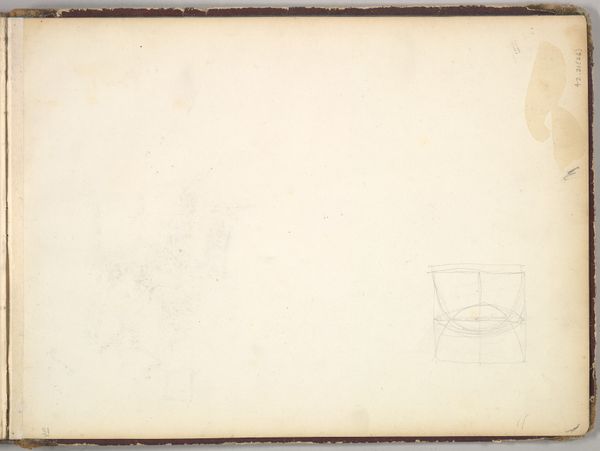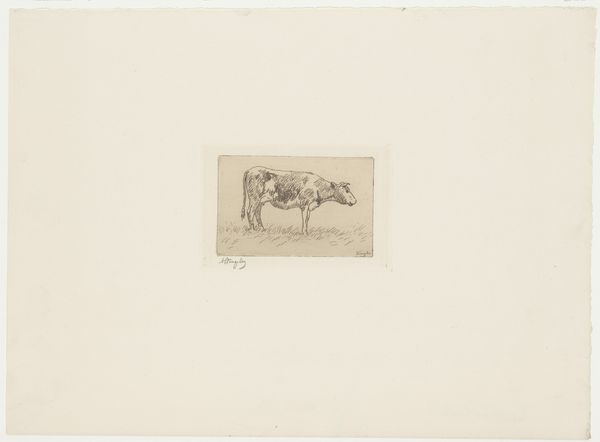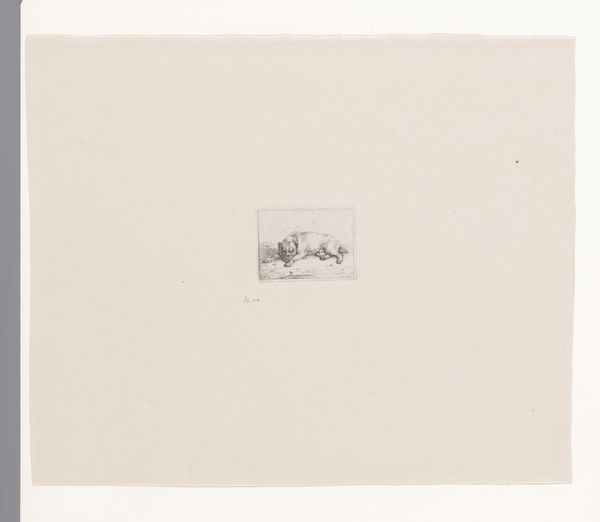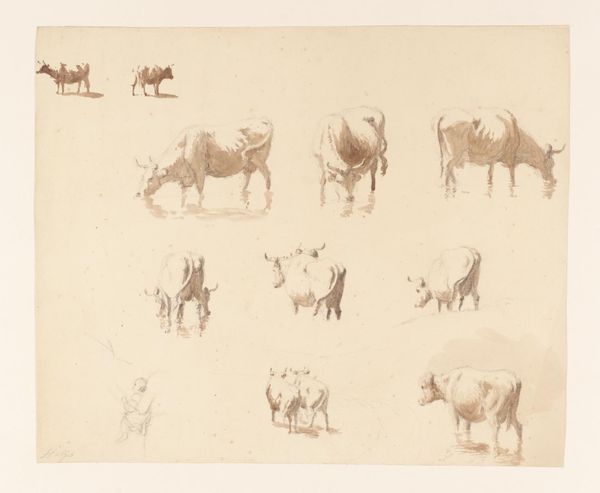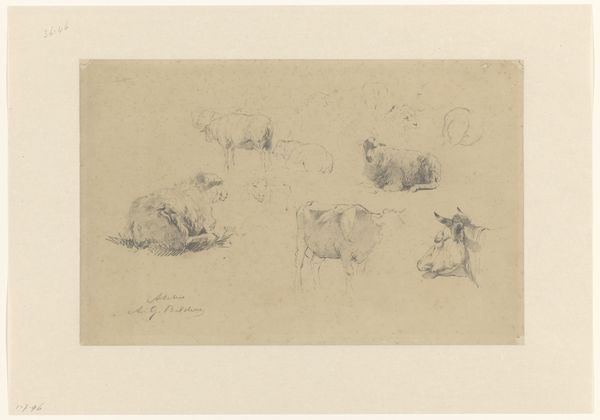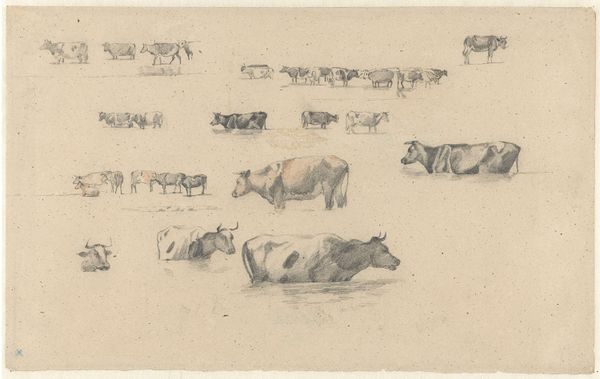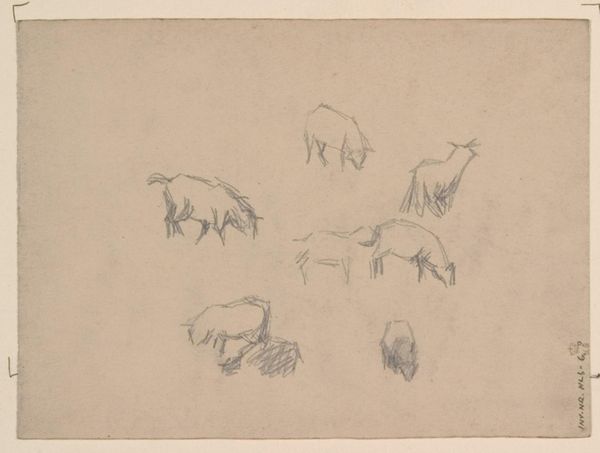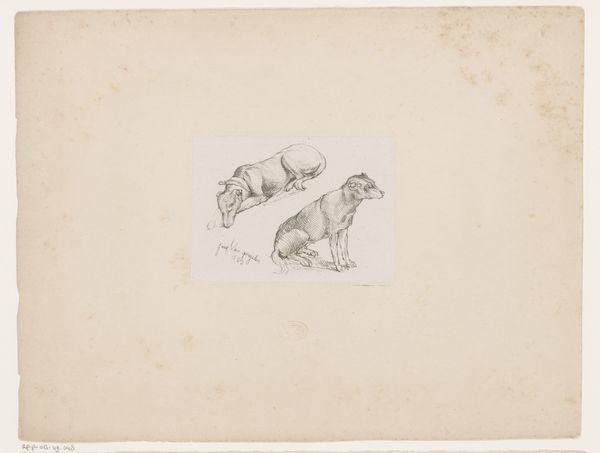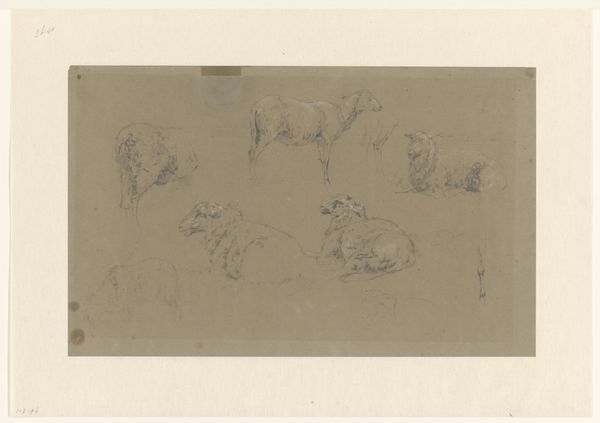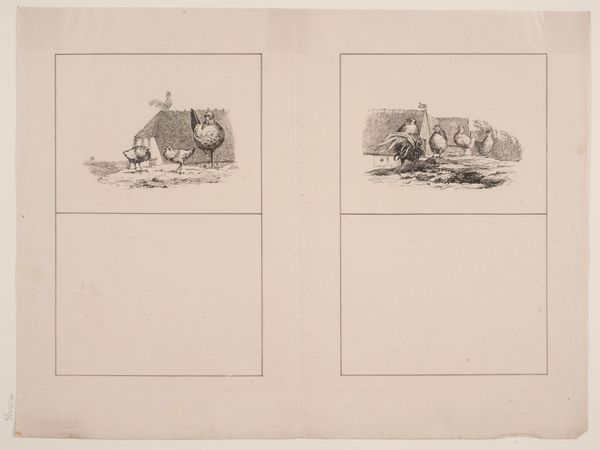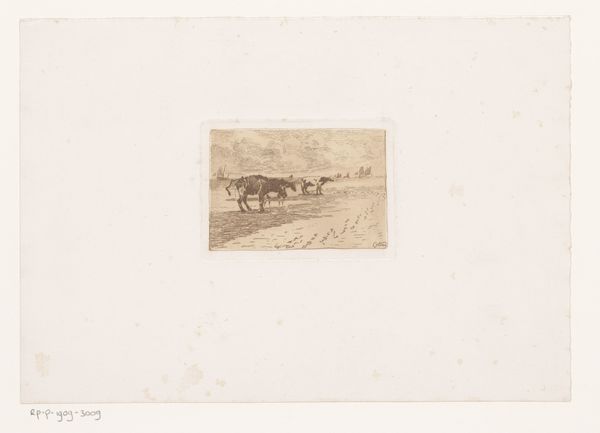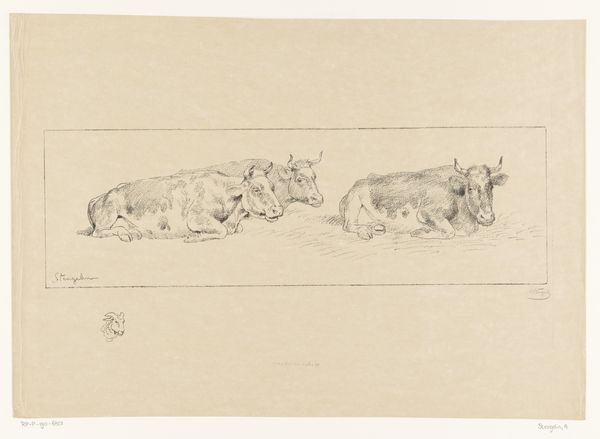
drawing, print, pencil
#
drawing
#
neoclacissism
# print
#
pencil sketch
#
etching
#
form
#
pencil
Dimensions: sheet: 9 9/16 x 11 13/16 in. (24.3 x 30 cm)
Copyright: Public Domain
Editor: This etching from between 1800 and 1850, titled "Design for Four Footstools", it’s an anonymous work, seems very understated, and I am curious about it because I see this move toward a very grandoise Neoclassicism as aspirational at this time. How do you interpret this work in its historical context? Curator: This design presents a fascinating glimpse into the aspirations and social structures of its time. We see Neoclassical ideals reflected in the symmetry and controlled ornamentation of these footstools, elements that signify order and refinement, linking them to a desire for social and political stability, don't you think? But who did those ideals serve? Who were these footstools really *for*? Editor: That's a great point! The uniformity is striking, and brings the political dimensions of design to the surface. I hadn't really considered the inequalities inherent in the idealized Neoclassical form and whether they perpetuated these inequalities! Curator: Exactly! While the design speaks to a visual language of status and cultivation, we can ask how it also subtly reinforces hierarchical power dynamics. Were these symbols of leisure and privilege accessible to everyone, or were they part of a visual code of exclusion? Editor: So, it's less about the object itself and more about what the object signifies, the historical underpinnings of taste and class. Curator: Precisely! Thinking about the social and political messages encoded within these designs challenges us to question whose stories are being told and whose are being erased by the clean lines of Neoclassicism. We're talking class, accessibility and historical value! Editor: This reframes the drawing for me. I see it as a record and reinforcement of societal structures. The conversation really highlights design's capacity to shape or challenge ideas! Curator: Absolutely, seeing these objects as active participants in shaping identity and social norms enables a more thoughtful and equitable perspective.
Comments
No comments
Be the first to comment and join the conversation on the ultimate creative platform.
